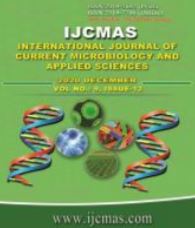


 National Academy of Agricultural Sciences (NAAS)
National Academy of Agricultural Sciences (NAAS)

|
PRINT ISSN : 2319-7692
Online ISSN : 2319-7706 Issues : 12 per year Publisher : Excellent Publishers Email : editorijcmas@gmail.com / submit@ijcmas.com Editor-in-chief: Dr.M.Prakash Index Copernicus ICV 2018: 95.39 NAAS RATING 2020: 5.38 |
Chilli is one of the important vegetable as well as spice crop of India. India ranks first in dry chilli production worldwide. Chilli is used throughout the world as a spice and also in the making of beverages and medicines. Since time immemorial chilli is an indispensible part of Indian diet. There are more than 400 cultivars of chilli grown all over the world. Few of them are praised for their red colour because of the pigment ‘capsanthin,’ while others are known for ‘hotness’ due to presence of alkaloid ‘capsaicin.’ It is reported that chilli helps in boosting immune system and lowering of cholesterol. India is rich source of genetic variability of chilli with different quality factors. Limited efforts have been made to release location specific suitable varieties. There is an urgent need and vast scope of evaluating and developing location specific varieties having higher yield potential. In the present investigation thirty seven diverse chilli genotypes were assembled from different parts of India to study their performance in the Sundarban region of West Bengal. The genetic information gathered on yield and yield attributing traits would be of utility in formulation of an efficient breeding programme for the improvement of chilli crop as well as to develop promising genotypes/ hybrids.
 |
 |
 |
 |
 |